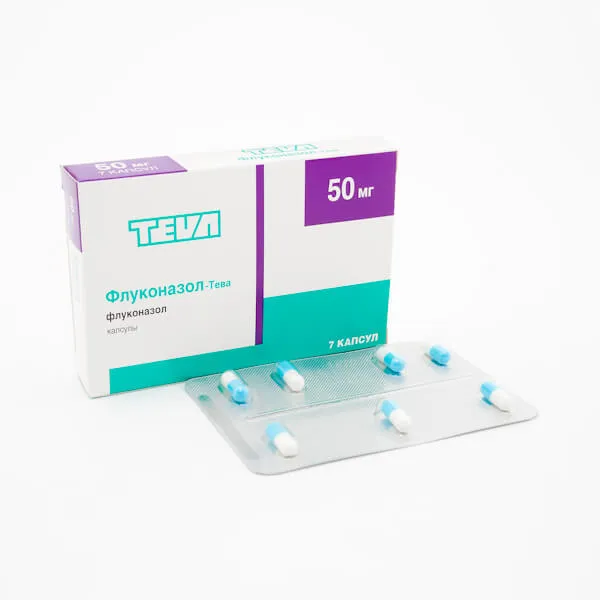Description
Fluconazol-TEVA (Fluconazole) Hard Capsules 50 mg. №10
Ingredients
Active ingredient: Fluconazole 50 mg per capsule.
Dosage
Recommended dosage: The usual dose is one capsule daily. Consult a healthcare professional for personalized dosing instructions.
Indications
Indicated for: Treatment of fungal infections such as vaginal yeast infections, oral thrush, esophageal candidiasis, and cryptococcal meningitis.
Contraindications
Do not use if: Allergic to fluconazole or other azole antifungals. Consult a doctor if pregnant, breastfeeding, or taking other medications.
Directions
How to take: Swallow the capsule whole with a glass of water. Take consistently at the same time each day.
Pharmacological Effects
Pharmacological Effects: Fluconazole acts by inhibiting the fungal cytochrome P450 enzyme, thus disrupting the synthesis of ergosterol, an essential component of fungal cell membranes. This leads to increased permeability and ultimately cell death.
Scientific Evidence
Fluconazole, the active ingredient in Fluconazol-TEVA, is a potent antifungal agent that works by inhibiting the synthesis of ergosterol, a key component of fungal cell membranes. Studies have shown fluconazole to be effective in treating various fungal infections, with high efficacy rates and favorable safety profiles.
Additional Information
Fluconazol-TEVA 50 mg capsules are well-tolerated by most patients, with common side effects including nausea, headache, and abdominal pain. It is important to complete the full course of treatment as prescribed to ensure the infection is fully eradicated.
Clinical Trials: Clinical trials have demonstrated the efficacy of fluconazole in the treatment of various fungal infections, including candidiasis and cryptococcosis. One study published in the Journal of Antimicrobial Chemotherapy showed a cure rate of over 90% in patients with candidemia treated with fluconazole.





